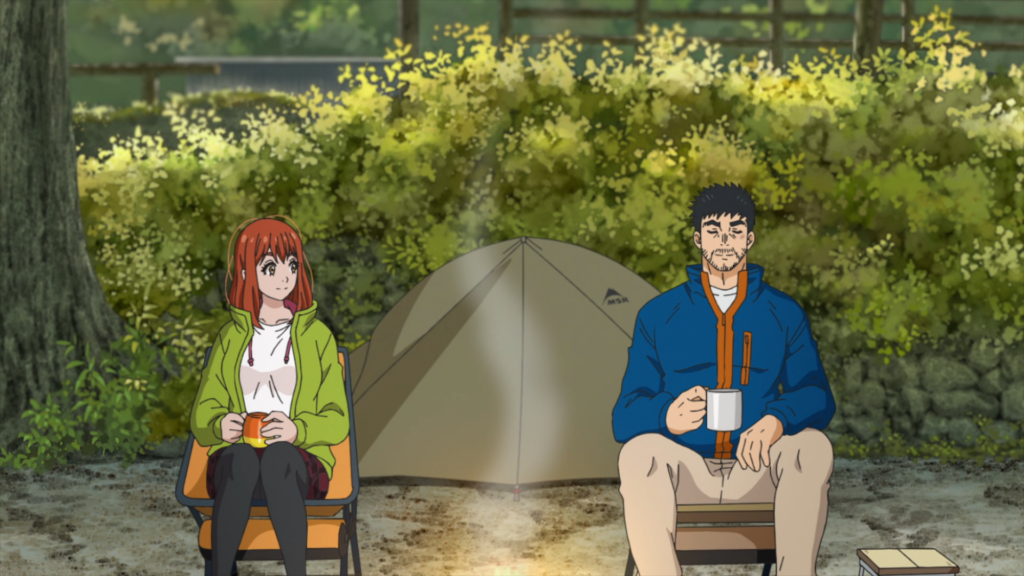Exploring Solo Camping for Two: Essential Gear and Insights for Outdoor Enthusiasts
Solo Camping for Two has captured the hearts of many with its engaging portrayal of outdoor adventures. The manga by Yudai Debata offers a comforting glimpse into the world of camping, appealing to both seasoned adventurers and those new to the wilderness. While the animation adaptation by SynergySP has received mixed reviews, it still brings the essence of the manga to life, encouraging viewers to explore the healing power of nature. This article aims to delve into the technical aspects of camping gear as depicted in Solo Camping for Two, providing valuable insights for those looking to embark on their own outdoor journeys.
Do You Really Need a Tent for Camping?
When planning a camping trip, the first question that often arises is whether you need a tent. The answer may surprise you: not necessarily. For those who may feel uncomfortable with traditional tent camping, numerous glamping options exist, such as cabins, yurts, or safari-style tents. If you’re more at ease in the great outdoors, consider investing in a weatherproof hammock as an alternative to a tent.
Solo Camping for Two highlights the significance of having some form of shelter. A tent offers protection against various elements, including rain, wind, and pesky insects. While large wildlife like bears or mountain lions might not be a common concern, insects can pose a significant threat. After experiencing illnesses like malaria and dengue myself, I can attest to the importance of safeguarding against bugs. Relying solely on insect repellents like DEET or picaridin can be misleading; it’s crucial to take additional precautions.
Understanding the Different Types of Tents
Even experienced campers might be taken aback by the wide variety of tents available on the market. While many tents are versatile enough for different conditions, they aren’t universally applicable. Choosing the right tent often depends on specific scenarios.
Common tent types include dome tents, half-dome tents, and A-frame tents. Recently, bivy sacks have gained popularity amongst ultralight campers and backpackers due to their lightweight and compact design.
Dome tents are the most recognizable type, featuring sturdy walls and being either free-standing or staked. Free-standing models typically require guide ropes and poles for setup. Half-dome tents, on the other hand, share similarities with dome tents but utilize breathable materials like mesh for improved ventilation and reduced weight. A-frame tents, shaped like triangles, offer another alternative.
In Solo Camping for Two, the protagonist Gen-san utilizes an ultralight MSR FreeLite backpacking tent, a testament to the growing trend of lightweight camping gear. When selecting a tent, consider where and under what conditions you plan to camp. Higher-quality tents often come with an "X-season" label, indicating the seasons for which the tent is suitable.
For beginners, visiting a local outdoor gear store can be invaluable. If there’s no REI nearby, consider looking into options like the Trailmade Backpacking Bundle or the Kelty Discover Basecamp Bundle. While these may come at a higher price point, they are built to last and provide excellent value for novice campers.
If you’re on a limited budget, brands like Ozark Trail offer reliable and affordable options, such as their Hiker tent, which retails for around $40 and is perfect for summer outings.
The Importance of Choosing the Right Sleeping Bag
Solo Camping for Two brings attention to a vital yet often overlooked camping essential: the sleeping bag. Just like tents, sleeping bags come in various types, and your choice should reflect your personal preferences and camping conditions. It’s essential to select a sleeping bag rated for the temperatures you expect to encounter. A bag rated for 40°F, for instance, may not keep you warm enough if temperatures dip lower.
A quality sleeping bag will typically feature either an EN or ISO rating, indicating its comfort, limit, and survival ratings. For example, my sleeping bag is rated for 45°F, making it comfortable within a range of 60°F to 80°F. However, once the temperature drops below 55°F, I begin to feel cold, and at temperatures above 90°F, it becomes uncomfortably hot. While it may keep you alive in conditions below its rating, it’s crucial to consider your comfort level.
Additionally, as portrayed in the anime, using a sleeping pad can significantly enhance your camping experience. Sleeping directly on the ground can lead to discomfort due to temperature fluctuations. A sleeping pad serves as a barrier, providing essential insulation. These pads come in inflatable or foldable options, but some campers, including myself, prefer using a yoga mat for its simplicity, despite its bulkiness.
Respecting Nature and Safety Practices
When venturing into the wilderness, it’s essential to respect both the environment and fellow campers. If you’re camping solo, make sure to inform someone about your plans, including your intended location and duration of the trip. A single misstep on a trail can lead to disorientation or injury, and being prepared can make all the difference.
Investing in the right gear and honing camping skills might seem overwhelming, but the rewards of immersing yourself in nature are well worth the effort. Whether you find yourself gathered around a campfire or taking in breathtaking views, the experience of camping offers a unique connection to the outdoors.
In conclusion, Solo Camping for Two serves as an inspiring guide for those looking to explore the great outdoors. By understanding the importance of essential camping gear like tents and sleeping bags, you can enhance your outdoor experiences. Whether you’re a novice or a seasoned camper, the insights gained from this manga can help you make informed decisions and foster a deeper appreciation for the beauty of nature.
